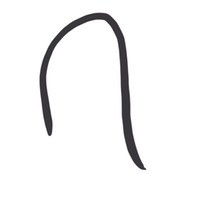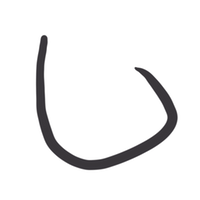Vanessa Batrouni, 1984
Many may know Samer Tabbaa as the former director of Jordan’s National Gallery which he helped to establish in the early 1980s, but not all realize that he is one Jordan’s foremost sculptors and very much the artist’s artist.
Samer’s reserved, contemplative nature finds total expression in his chosen medium, a talent he tripped over while doing an arts and crafts course after graduating in sociology and anthropology.
Working with manual crafts he discovered a ‘rightness’ that had escaped him in his earlier studies and encouraged by his teacher he took a Fine Arts degree Youngstown State University which led to a masters degree in Fine Arts majority in sculpture from Kent State University in 1979. Feeling his way through the materials Samer sculpted in wood, in metal and in stone, and it is to stone that he has finally committed himself.
It is the challenge of the stone that so attracts this talented sculptor to work with it. Its ‘strong resistance to his ideas, its powerful individuality’ opens communication channels and ignite a flow of ideas between sculptor and sculpted.
Different types of stones evoke various thoughts and emotions and the artist finds himself responding spontaneously to the separate personalities of granite, limestone and alabaster which pose varying degrees of resistance. This spontaneity acts as a catalyst unlocking the unconscious and its secret store and the artist can only analyze his work after the event.
Samer’s description of his work process is a significant key to his sculpture. His attraction for an already existing form or forms within – a piece of stone predisposes to a collaboration with his material rather than its subjection. Acting like an natural agent, such as the wind. Sea and air. He marks it, scores it, fashions it yet leaves it personality intact. This approach and the absence of a conscious and intellectual pre-planning imbues his work with a universality that many critics praise in his sculpture.
Formalist
‘ More a formalist than an illustrator and not limited to parochialism’ Samer draws out qualities in stone that speak voicelessly to all. Samer developed his style, or rather his approach, during a voluntary exile in Spain where, despite a language barrier, he established himself soon after leaving the National Gallery. Earlier pieces testify to his battle with stone; less manipulated and more emotional he learnt through accidents.
He created tension through unequal volumes, balancing larger pieces on small, exercised his will over the stone by cutting through it or by hanging the unhangable and even tried to recreate its magical properties through its spatial relationships with other pieces of stone in a miniature Stonehenge that is now in display at the National Gallery.
Translator
Through these experiments and experiences Samer has become more than a carver, he has become a translator of the ‘stone’ world.
In touching the unconscious, Samer has come to understand the natural law of the positive and negative components in life without which cognizance isn’t possible. This observation now obsesses him and he expresses its truth with a simple eloquence in his most recent work; smooth and unsmoothed surfaces alternate with each other as do volume and space and his work has moved towards a ‘musical’ order and control.
This is evidenced by a V shaped structure that stands in his living room where black lines are repeated on white and white lines on black. Parallel lines seem best to serve his idea and he transfers this to stone sandwiching smooth and ruffled slabs together.
Saudi Arabia
Samer’s international appeal and monumentality has gained him recognition in the area and he was commissioned to design sculptural pieces for the new airport in the Kingdom of Saudi Arabia. Having seen the space he produced two relief works again based on opposing lines, the one inspired by the concave and convex undulations of sand dunes and the other which was accepted a portcullis of raised iron bars that emulate kites and aerial landscapes.
Samer also put forward a design for the Queen Alia Airport, a towering twelve metre high plexi glass structure that by day would take life from without by reflecting its surroundings and by night would take life from within, lit like a small computer.
Samer believes his work is becoming more streamlined and less emotional being less concerned with the challenge and more absorbed by the idea. Art lovers will get an opportunity to see his latest work in the rear future as he is presently working on pieces for an exhibition whose date will be set later.


